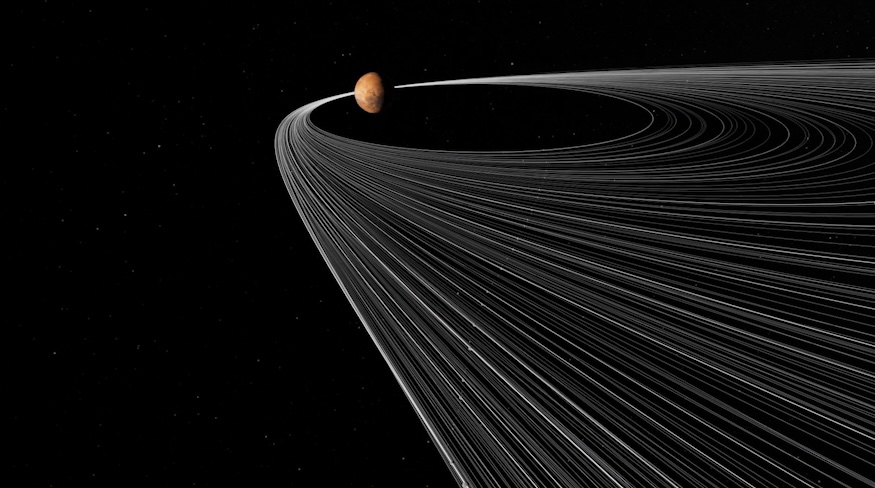
November 22, 2024 by Brian Koberlein
Collected at: https://www.universetoday.com/169848/new-supercomputer-simulation-explains-how-mars-got-its-moons/#google_vignette
Earth and Mars are the only two rocky planets in the solar system to have moons. Based on lunar rock samples and computer simulations, we are fairly certain that our Moon is the result of an early collision between Earth and a Mars-sized protoplanet called Theia. Since we don’t have rock samples from either Martian moon, the origins of Deimos and Phobos are less clear. There are two popular models, but new computer simulations point to a compromise solution.
Observations of Deimos and Phobos show that they resemble small asteroids. This is consistent with the idea that the Martian moons were asteroids captured by Mars in its early history. The problem with this idea is that Mars is a small planet with less gravitational pull than Earth or Venus, which have no captured moons. It would be difficult for Mars to capture even one small asteroid, much less two. And captured moons would tend to have more elliptical orbits, not the circular ones of Deimos and Phobos.
An alternative model argues that the Martian moons are the result of an early collision similar to that of Earth and Theia. In this model, an asteroid or comet with about 3% of the mass of Mars impacted the planet. It would not be large enough to have fragmented Mars, but it would have created a large debris ring out of which the two moons could have formed. This would explain the more circular orbits, but the difficulty is that debris rings would tend to form close to the planet. While Phobos, the larger Martian moon, orbits close to Mars, Deimos does not.
This new model proposes an interesting middle way. Rather than an impact or direct capture, the authors propose a near miss by a large asteroid. If an asteroid passed close enough to Mars, the tidal forces of the planet would rip the asteroid apart to create a string of fragments. Many of those fragments would be captured in elliptical orbits around Mars. As computer simulations show, the orbits would shift over time due to the small gravitational tugs of the Sun and other solar system bodies, eventually causing some of the fragments to collide. This would produce a debris ring similar to that of an impact event, but with a greater distance range, better able to account for both Phobos and Deimos.
While this new model appears to be better than the capture and impact models, the only way to resolve this mystery will be to study samples from the Martian moons themselves. Fortunately, in 2026 the Mars Moons eXploration mission (MMX) will launch. It will explore both moons and gather samples from Phobos. So we should finally understand the origin of these enigmatic companions of the Red Planet.
Reference: Kegerreis, Jacob A., et al. “Origin of Mars’s moons by disruptive partial capture of an asteroid.“ Icarus 425 (2025): 116337.

Leave a Reply